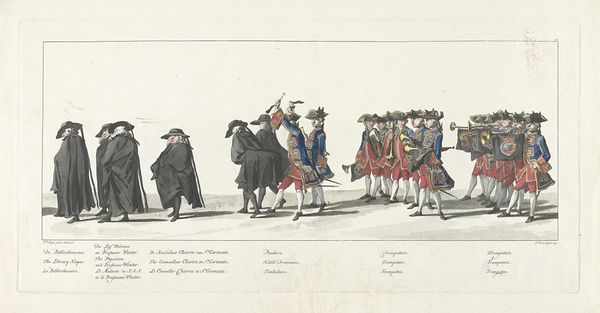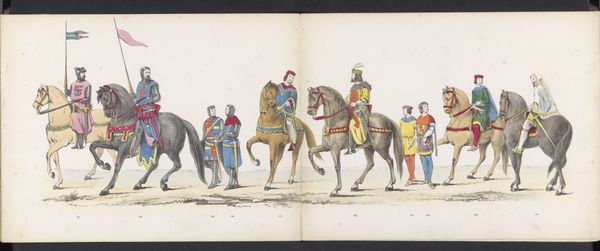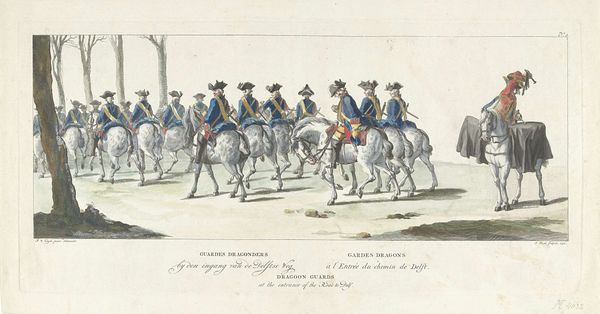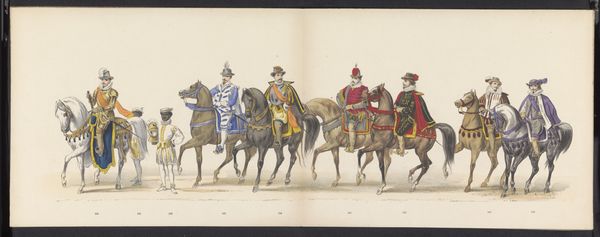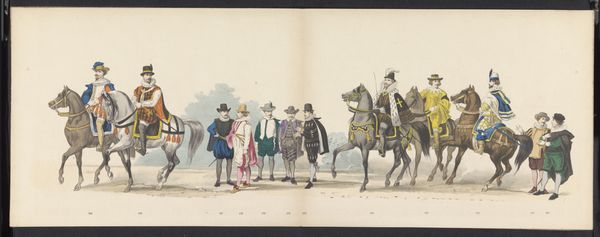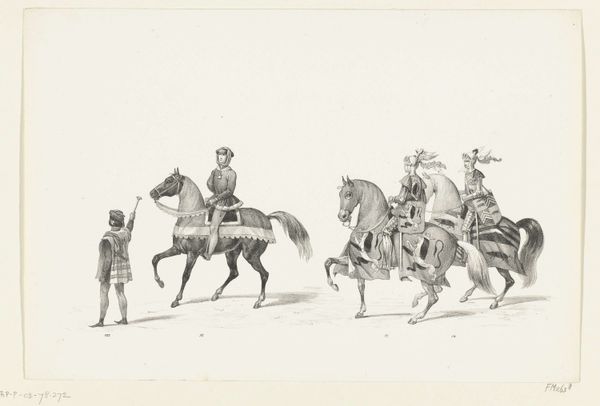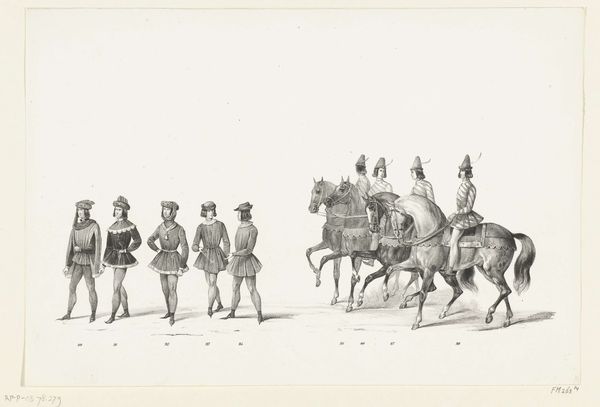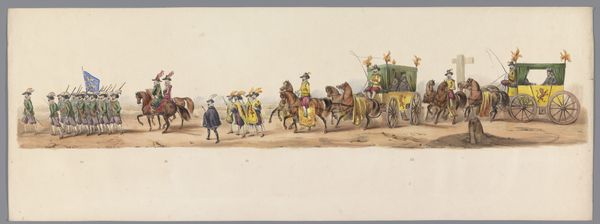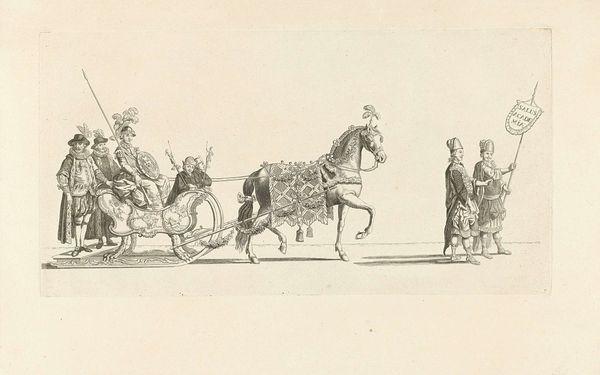
print, watercolor
# print
#
watercolor
#
historical fashion
#
watercolour illustration
#
genre-painting
#
academic-art
#
watercolor
Dimensions: height 290 mm, width 725 mm
Copyright: Rijks Museum: Open Domain
Curator: This delicate watercolor print, dating from 1873, is titled "Delftse optocht van 1873 (zesde plaat)" and it captures a historical re-enactment in Delft. Editor: My initial impression is of meticulous costuming; everyone is adorned in meticulously recreated garments. There is also a wonderful static quality to it. It feels more like a staged tableau than a bustling parade. Curator: Indeed. The artist meticulously documented this commemorative parade, likely playing into the prevalent historical consciousness and civic pride of the time. The parade itself, I suspect, was a way to publicly affirm a shared narrative of Delft's history, performed through clothing, gestures, and the presence of particular 'historical' figures. Editor: Looking at the garb, I see a recurrence of symbols and colors. Note the repeated use of the plumed hat and the particular pairing of red, black, and gold. The hats, for instance, aren’t just fashion, but symbols of status and civic roles, perhaps even harking back to guild identities. And aren’t those color pairings often associated with civic authority, signaling power and allegiance? Curator: Precisely! Consider too the performative aspect of these figures; they embody historical roles to emphasize certain values—perhaps courage, piety, or civic duty. Their postures, their props... they are visual arguments made flesh, reaffirming an accepted history. Editor: It’s remarkable how visual symbols evolve. The plume, which perhaps once designated a knight or nobleman, is now a badge of honor worn collectively. The painting makes the viewer think about how symbols are translated into our collective memory, adapted and remixed to perpetuate a historical narrative that is more fiction than truth. Curator: Precisely so. This work prompts reflection on how historical events are deliberately staged, dressed up, and paraded, and for what purpose. The artwork underscores how the past is never passively received; rather, it is continuously reshaped by the present to justify particular visions. Editor: Yes, an excellent encapsulation. Now I am looking at parades somewhat differently, as complex constructions with their own rhetorics and cultural logic.
Comments
No comments
Be the first to comment and join the conversation on the ultimate creative platform.



